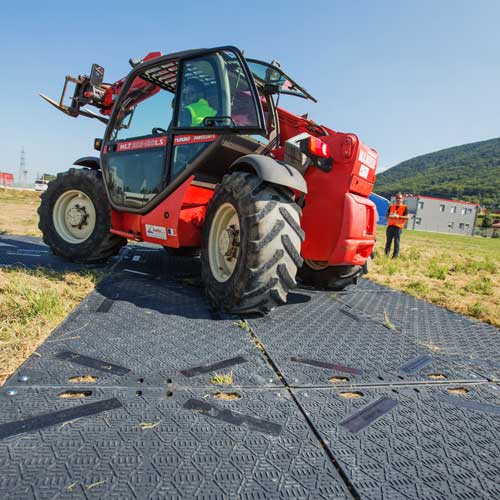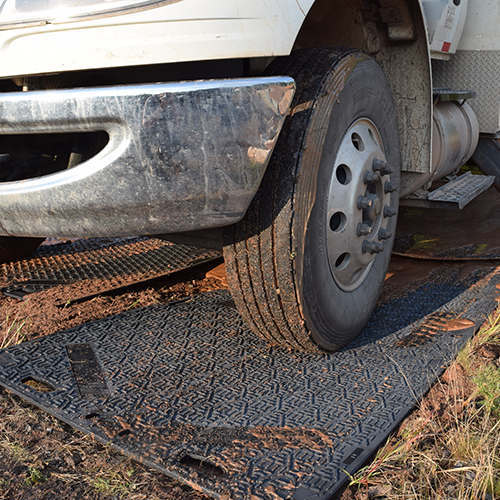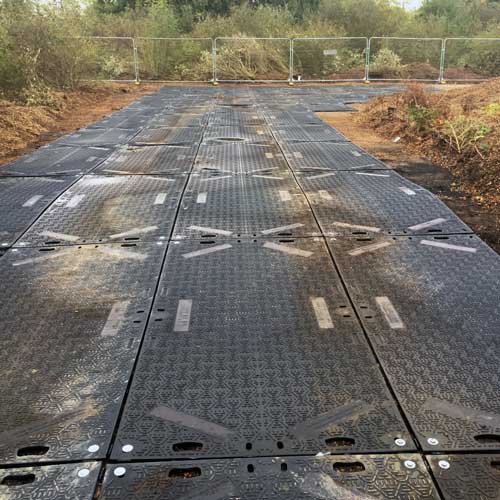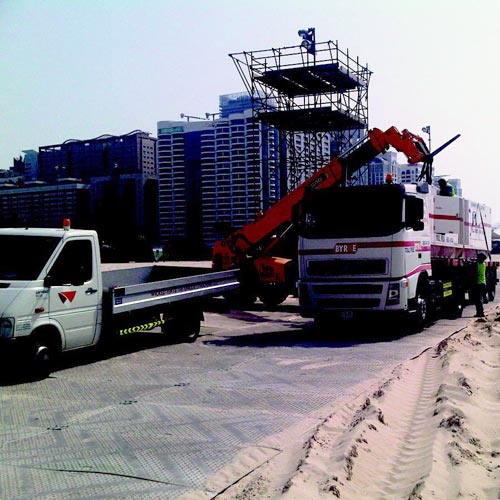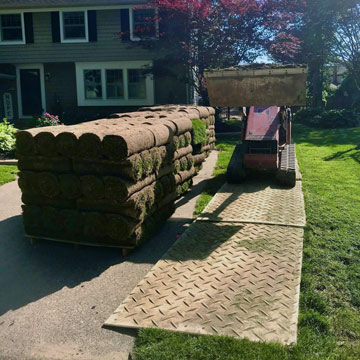Are Ground Protection Mats Good For Rubber Tracks?
Related Product: Ground Protection Mats Clear 1/2 Inch x 4x8 Ft.
When running heavy machinery over our ground protection mats, do not use vehicles that contain metal tracks. Such tracks could cause our polyethylene plastic mats to suffer damage, leaving the turf underneath the mats susceptible to unwanted wear and tear.
Benefits of Using Outdoor Protection Mats
Our ground protection mats deliver a number of benefits for making use of heavy machinery, carrier crawlers, and construction equipment that have rubber tires and rubber tracks.- They protect landscaping and planted grass from damage from large tires and tracks.
- They allow construction teams to create temporary roadways almost anywhere.
- They protect loaders from becoming stuck in a field that consists of mud and that doesn’t have a roadway.
- They do not splinter or become water-logged, allowing you to use them on multiple job sites.
- They provide a high level of traction, so trucks can maneuver in tight spaces more successfully than on bare dirt or grass.
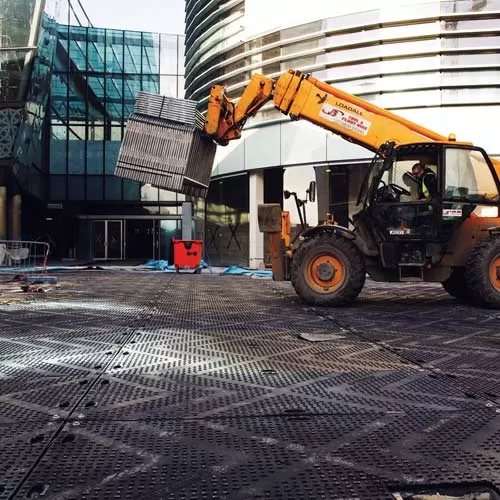
Additionally, these ground protection mats can create temporary walkways around a construction site for visitors or across an oval track-and-field surface, allowing football players and soccer players to walk safely to the field in the center of the oval.
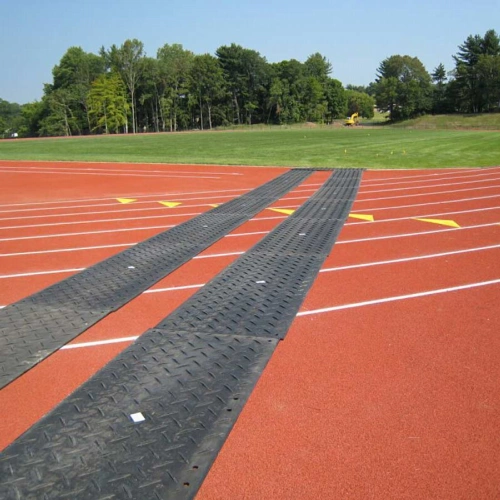
Rubber Tracks Vs. Metal Tracks
Heavy machinery like skid steers or a plastic excavator sometimes will make use of metal tracks. So why would someone make use of metal tracks instead of rubber tracks?Steel tracks have a far longer history of use on heavy machinery than rubber tracks. This means that the technology behind metal tracks is proven over many decades, while rubber tracked vehicles are far more recent, meaning some professionals don’t trust them as much yet for especially tough conditions.
When the vehicle needs to be able to maintain a lower center of gravity for moving across ground conditions that are less than ideal, steel tracks have a significant amount of weight, helping maintain the vehicle’s low center of gravity.
Advantages of Rubber Tracks
One of the biggest advantages of rubber tracks is the ability to provide flexibility. This gives the driver a higher level of maneuverability with the vehicle. Metal tracks give the vehicle operator a higher level of strength and power for moving the vehicle forward, even if tough ground conditions exist.Rubber tracks typically provide a lower upfront cost than metal tracks, but rubber tracks likely won’t last as long as steel tracks. When a link in a set of steel tracks pops out of place, the link is replaceable. If a section of the rubber tracks fails, the entire track needs replacing.
Ultimately, the biggest advantage of rubber tracks over metal tracks is that rubber tracks do not chew up the surface like metal tracks do. This also applies to our plastic protection mats, which can suffer damage under the metal tracks but that are safe to use with rubber tracks.
Choosing Tires Over Tracks
Even if you make use of steel tracks on many of your construction company’s pieces of equipment, you can still deploy our polyethylene protection mats in areas where you will be driving large vehicles that have rubber tires.An advantage of using tracks instead of tires is that the tracks better distribute the weight of the large vehicle than tires. The greater weight distribution keeps the vehicle from sinking into soft ground as much as a vehicle with tires. (Our ground mats can help with the problem of sinking when vehicles are using rubber tires.)
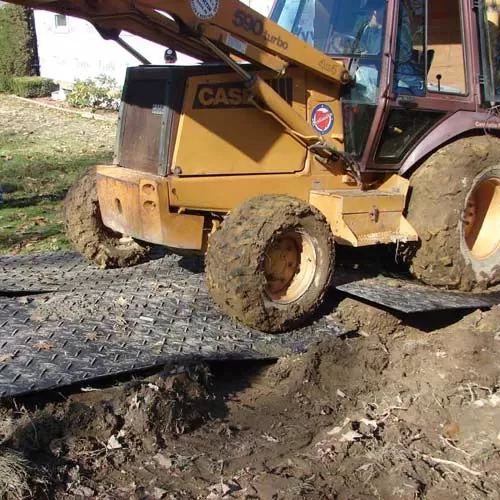
When making use of a large construction vehicle with rubber tires instead of metal or rubber tracks, you can drive the vehicle at greater speeds.
When the vehicle is moving on permanent roads or on temporary roads on protection mats, tires help you move from point A to point B quickly. On a construction site, though, where the vehicle moves a far shorter distance, speed may not be as important, bringing tracks back into play.
Rubber tires don’t provide the same level of traction and grip that metal and rubber tracks provide when going over bare ground. However, once you install our plastic ground mats, the rubber tires will gain the type of traction you need to move the vehicles safely and in a controlled way.
What Ground Protection Mats Work for Steel Tracks?
When moving a steel tracked vehicle, like a dozer or an excavator, across a concrete or asphalt surface, it is possible that the tracks will cause damage to the surface. Such damage often is not easily repairable, meaning it likely will shorten the lifespan of the poured surface.To move steel tracked equipment across these areas, consider using rubber mats, rather than polyethylene plastic ground protection mats. Our customer service team at Greatmats may be able to make some recommendations on rubber mats that could help you move your steel tracked vehicles in a safer manner across concrete without causing damage.
